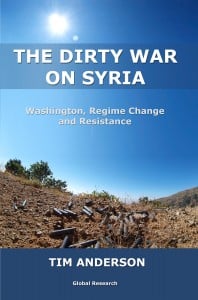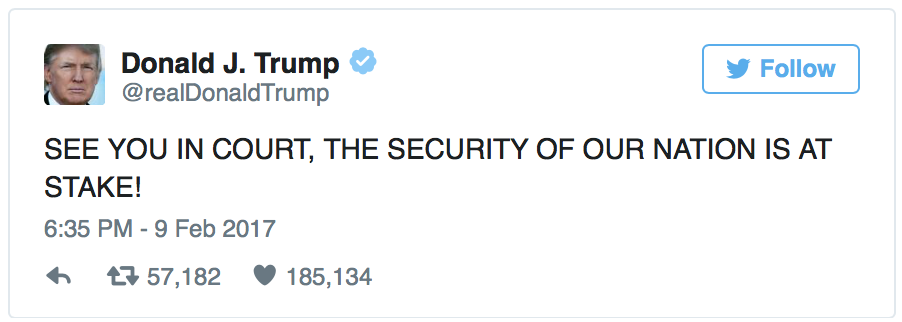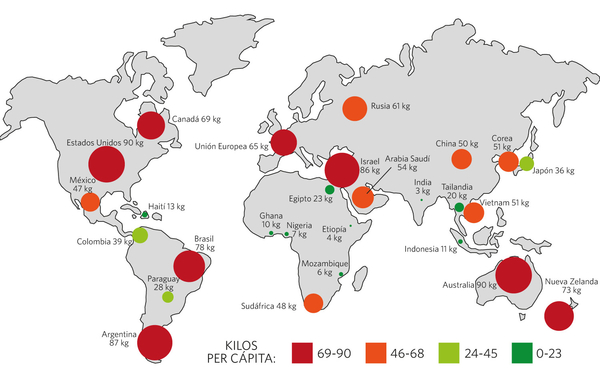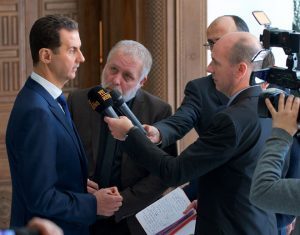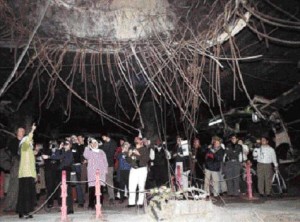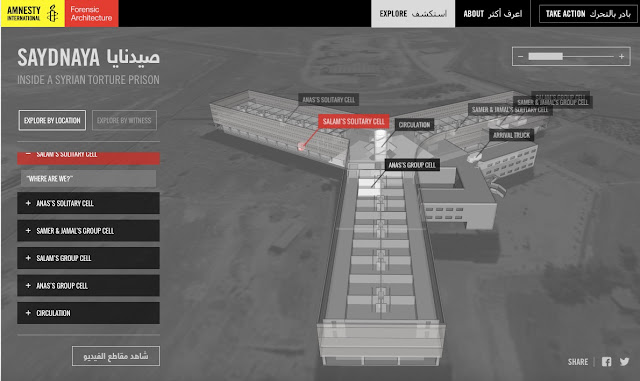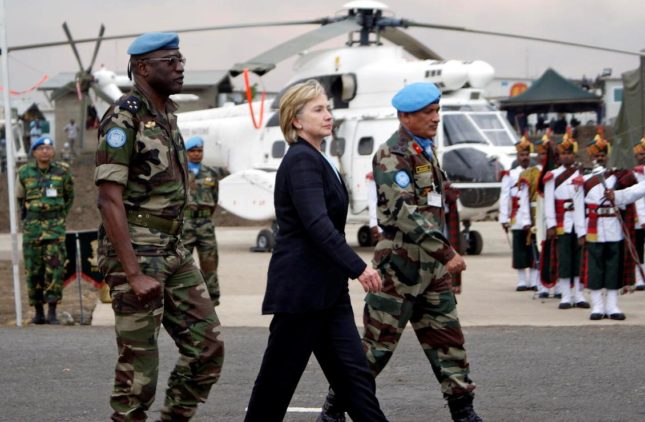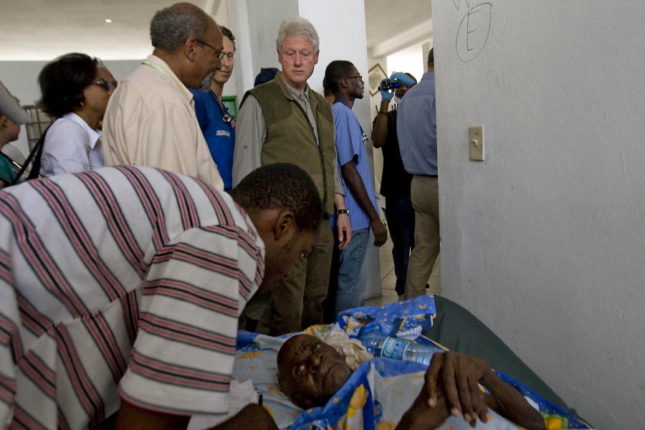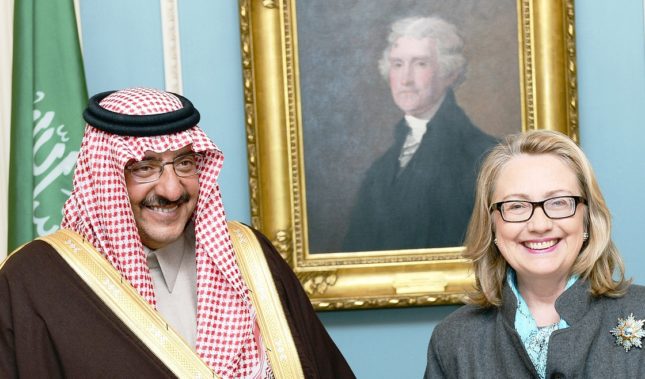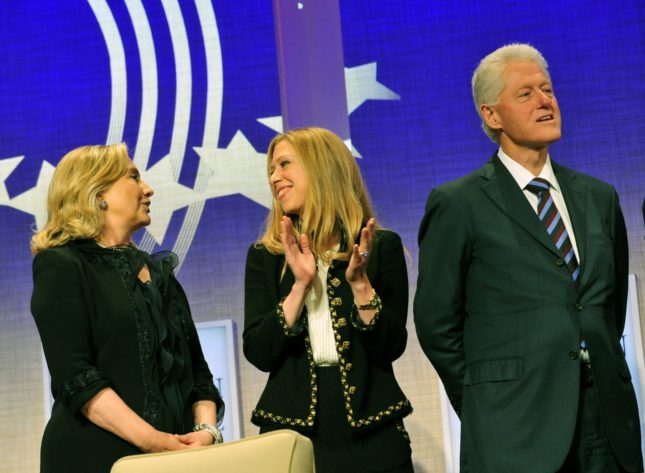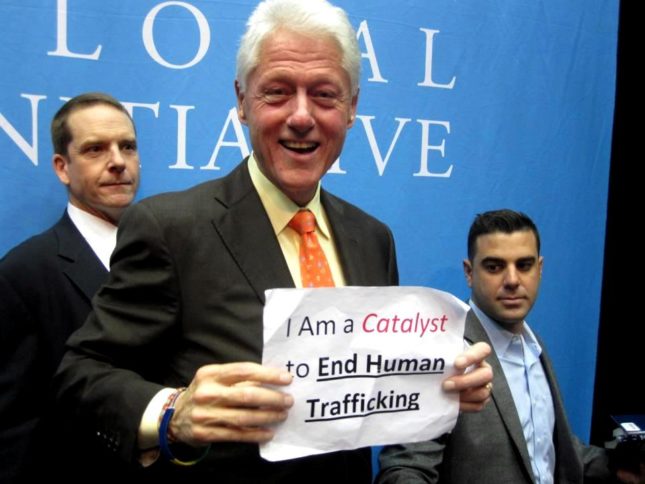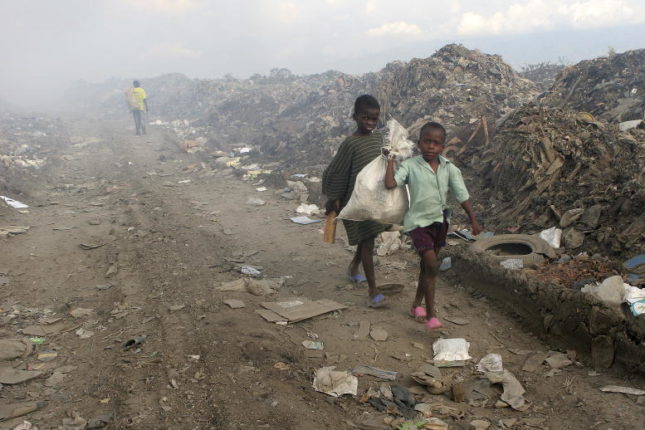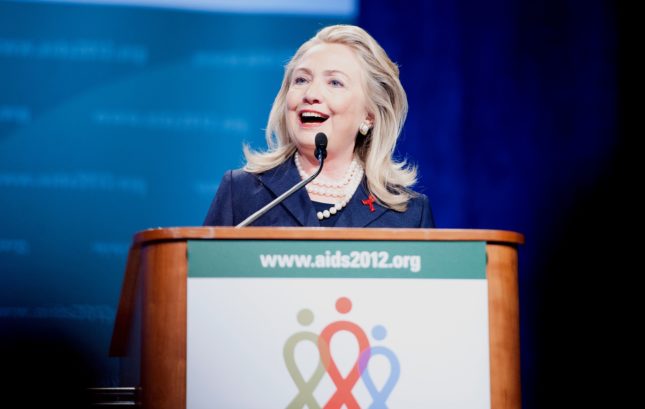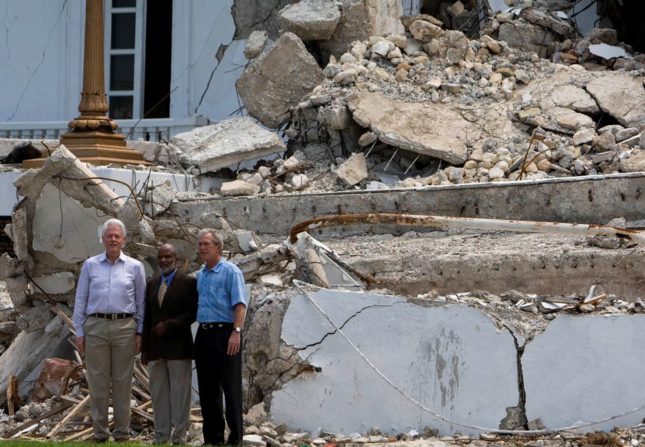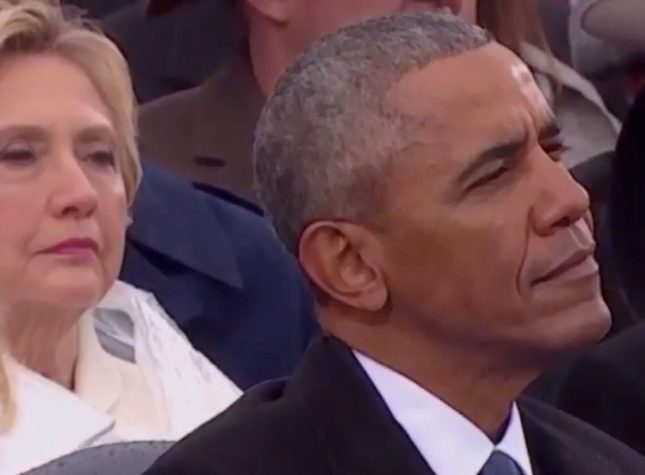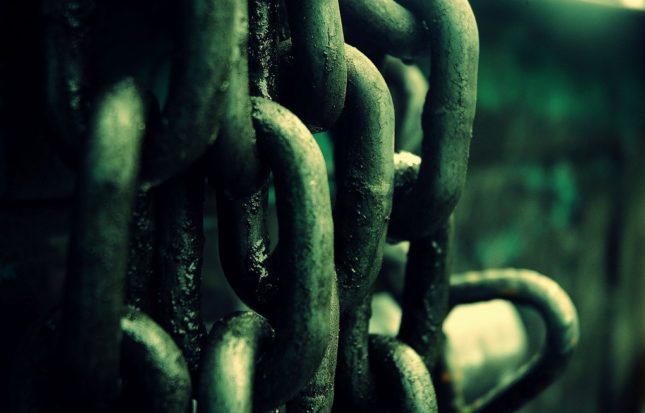Despite certain economic and social setbacks, the Western Empire is doing remarkably well. That is, if we measure success by the ability to control the world, to condition the brains of human beings on all continents, and to crush almost all substantial dissent, at home and abroad.
What has almost entirely disappeared from life, at least in such places as New York, London or Paris, is that simple human joy, which is so obvious and evident when it exists. Paradoxically, in the very centers of power, most people seem to be living anxious, unfulfilled, almost frightened lives.
It all somehow doesn’t feel right. Shouldn’t citizens of the conquering part of the world, of the victorious regime, be at least confident and optimistic?
Of course there are many reasons why they are not, and some of my comrades have already outlined in detail and in colorful language at least the main causes of depression and dissatisfaction with life, which are literally devouring alive those hundreds of millions of European and North American citizens.
The situation is mostly analyzed from a socioeconomic angle. However, I think that the most important causes for the present state of things are much simpler: the West and its colonies almost entirely destroyed the most essential human instincts: people’s ability to dream, to feel passionate about things, to rebel and to ‘get involved’.
Single-mindedness, optimism, naiveté are almost entirely gone. But those are exactly the qualities that used to move our human race forward!
*
Despite what is now commonly perceived in the West, it is not ‘knowledge’ and definitely not ‘science’ that were behind the greatest leaps forward achieved by civilization.
It has always been a deep and instinctive humanism, accompanied by faith (and here I’m not talking about some religious faith) and by tremendous dedication and loyalty to the cause. Without naïveté, without innocence, nothing great could have ever been attained.
Science was always there, and it was important for improving many practical aspects of human life, but it was never the main engine propelling a nation towards some just, balanced, and ‘livable’ society. When employed by an enlightened system, science has played an important role in building a much better world, but it was never the other way around.
Progress was always triggered and fueled by human emotions, by seemingly irrational and unachievable dreams, by poetry and wide scale burning of passions. The finest concepts for improvement of civilization were frequently not even logical; they were simply born out of some beautiful human instincts, intuitions and desires (logic was applied later, when practical details had to be nailed down).
Now ‘knowledge’, rationality and ‘logic’, at least in the West, are forcing human feelings into a corner. ‘Logic’ is now even replacing traditional religions. Obsession with ‘facts’, with ‘understanding’ everything, is actually becoming absurdly extreme, dogmatic, even fundamentalist.
All this fanatical fact collecting often feels unreal, ‘metallic’, cold and to many of those who are coming from ‘the outside’ (geographically or intellectually), extremely unnatural.
Let’s not forget that ‘facts’ consumed by the masses and even by the relatively educated Westerners, are generally coming from identical sources. The same type of logic is being used, and several undistinguishable tools of analyses applied. Consuming excessive amount of news, ‘facts’ and ‘analyses’ usually doesn’t lead to understanding anything in depth, or to truly critical thoughts, quite the contrary – it very effectively murders one’s ability to consider totally new concepts, and especially to rebel against the intellectual clichés and stereotypes. No wonder that the European and North American middle classes are among the most conformist people on earth!
Collecting mountains of data and ‘information’ in most cases leads absolutely nowhere. For millions, it is becoming just a hobby, like any other one, including videogames and PlayStation. It keeps a person ‘on top of things’, so he or she can impress acquaintances, or it simply satisfies that neurotic need to constantly consume news.
To make things worse, most Westerners are incessantly locked in a complex ‘information’ and perceptions web with their families, friends and co-workers. There is constant pressure to conform while extremely little space and almost no rewards for true intellectual courage or originality.
*
Regimes have managed to a great extent to standardize ‘knowledge’, mainly by utilizing pop culture and indoctrinating people through its ‘educational’ institutions.
People are actually voluntarily locking themselves for years in schools and universities, wasting their time, paying their own money, even getting into debt, just in order to make it easier for the regime to indoctrinate them and turn them into good and obedient subjects of the Empire!
Already for decades the system has been successfully producing entire generations of emotionally dead and confused individuals.
These people are so damaged that they cannot fight for anything, anymore (except, sometimes, for their own personal and selfish interests); they cannot take sides, and cannot even identify their own goals and desires. They constantly try (and fail) to ‘find something meaningful’ and ‘fulfilling’ they could do in life. It is always about them finding something, not about joining meaningful struggles or inventing something thoroughly new for the sake of humanity! They keep going ‘back to school’, they keep crying for ‘lost opportunities’ because they ‘didn’t study what they think they really should have’ (no matter what they actually study or do in life, they mostly feel dissatisfied, anyway).
They are constantly scared of being rejected, they are petrified that their ignorance and inability to do anything truly meaningful would be discovered and ridiculed (many of them actually sense how empty their lives are).
They are unhappy, some thoroughly miserable, and even suicidal. Yet their desperation does not propel them into action. Most of them never rebel; never truly confront the regime, never challenge their immediate milieu.
These hundreds of millions of broken and idle people (some of them actually not stupid at all) are a tremendous loss to the world. Instead of erecting barricades, writing outraged novels or openly ridiculing this entire Western charade, they are mostly suffering in silence.
If the opportunity to thoroughly change their lives really arrives, they cannot identify it, anymore; cannot grasp it. It is because they cannot fight; they were ‘pacified’ since an early age, since school.
That is exactly where the regime wants to have its citizens. It’s where it got them!
Shockingly, almost no one calls this entire nightmare by its real name – a monstrous crime!
*
People buy books in order to make sense of it all, but they hardly manage to read them to the end. They are too preoccupied; they are lacking concentration and determination. And a great majority of books available in the stores are giving no meaningful answers, anyway.
Still, many are trying: they are analyzing and analyzing, aimlessly. They ‘don’t understand and want to know’. They don’t realize that this path of constantly thinking, while applying certain prescribed tools of the analyses, is one huge trap.
There is really nothing much to understand. People were actually robbed of life, robbed of natural human feelings, of warmth, of passion, even of love itself (what they call ‘love’ is often a surrogate, and nothing more).
All this is never pronounced not even in fiction books anymore, unless you read in Russian or Spanish. The success of the Empire to produce obedient, scared and unimaginative beings is now complete!
Big corporations are thriving; elites are collecting enormous booty, while a great majority of people in the West are gradually losing their ability to dream and to feel. Without those preconditions, no rebellion is possible. Lack of imagination, accompanied by emotional numbness, is the most effective formula for stagnation, even regression.
This is why the West is finished.
*
The grotesque obsession with science, with medical practices, and with ‘facts’, is helping to divert attention from real and horrific issues.
Constant debates, analyses, and ‘looking at things from different angles’, leads to nothing but passivity. But taking action is too scary, and people are not used to making dramatic decisions, anymore, or even gestures.
This also leads to the fact that almost no one in the West is now ready to gather under any ideological banner, or to embrace full heartedly what is called derogatorily ‘labels’.
For millennia, people flocked intuitively into various movements, political parties and groups. No significant change was ever achieved by one single individual (although a strong leader at the head of a movement, party or even government could definitely achieve a lot).
To be part of something important and revolutionary was symbolizing often a true meaning of life. People were (and in many parts of the world still are) fully committed, dedicated to important and heroic struggles. Trying to build a better world, fighting for a better world, even dying for it: that was often considered the most glorious thing that a human being could achieve in his or her lifetime.
In the West, such an approach is dead, thoroughly destroyed. There, cynicism reigns. You have to challenge everything, trust nothing, and commit to nothing.
You are expected to mistrust any government. You should ridicule everyone who believes in something, especially if that something is pure and noble. You simply have to drag through filth any grandiose attempt to improve the world, whether it is happening in Ecuador, Philippines, China, Russia or South Africa.
To show strong feeling for some leader, for a political party or government in a country that is still capable of some fire and passion, is met with mocking sarcasm in places like London or New York. “We are all thieves, and all human beings and therefore governments, are similar”, goes the deadly and toxic ‘wisdom’.
How lovely, really! What a way forward.
Yes, of course: if hours and hours are spent analyzing some fiery leader or movement, for instance in Latin America, at least some ‘dirt’ would always emerge, as no place and no group of people are perfect. This gives Westerners a great alibi for not getting involved in anything. That’s how it is designed. ‘Give up on the hope for a perfect world, say that you simply cannot believe in anything anymore’. Then, go back to school or get yourself some meaningless job.
It is actually much easier than to work extremely hard to save the world or your country! It is much easier than to risk your life and to fight for justice. It is easier than trying to really think, to attempt to invent something thoroughly new, for this beloved and scarred planet of ours!
*
An old Russian ballad says: “It is so hard to love… But it is so easy to leave…”
And with the revolution, with the movements, struggles, even governments that one full heartedly supports, it is, to a great extent, very similar to love.
Love can never be fully scrutinized, fully analyzed, or it is not really love. There is nothing, and should be nothing logical or rational about it. Only when it is dying one begins analyzing, while looking for excuses to slam the door.
But while it is there, while it exists, alive, warm and pulsating, to apply ‘objectivity’ regarding the other person would be brutal, disrespectful; in a way it would be a betrayal.
Only “new Westerners” can commit such travesty, by analyzing love, by writing ‘guides’ about how to deal with human feelings, how to maximize profits from their emotional investments!
How could a man who loves a woman just sit on a sofa and analyze: “I love her but maybe I should think twice, because her nose is too big, and her behind is too large?” That’s absolute nonsense! A woman who is loved, truly loved, is the most beautiful being on earth.
And so is the struggle!
Otherwise, without true dedication and single-mindedness, nothing will ever change; never improve.
But let’s not forget – the Empire doesn’t want anything to improve. That’s why it is spreading limitless cynicism and nihilism. That’s why it is smearing everything pure and natural, while implanting bizarre ‘perfection models’, so the people always compare, always judge, always have doubts, never feel satisfied, and as a result, abstain from all serious involvements.
The empire wants people to think, but think in a way it programs them to do. It wants them to analyze, but only by using its methods. And it wants people to discard, even reject their natural instincts and emotions.
The results are clear: grotesque individualism and self-centrism, confused, broken societies, collapsed relationships between people, and total spite for higher aspirations.
It is not only about the Marxist or revolutionary political parties, about the rebellions or internationalist, anti-imperialist struggles.
Have you noticed how shallow, how unstable most inter-human relationships in the West have become? Nobody wants to get truly ‘involved’. People are testing each other. They constantly think, hardly feel. Powerful passions are looked down on (emotional outbursts are considered ‘indecent’, even shameful): now it is suddenly all about one’s ‘feeling good’, always ‘calm’, but paradoxically, almost no one is actually feeling good or calm in this “new West”, anymore.
It all, of course, mutated into the exact opposite of what love, or a true revolutionary work (political, or artistic) used to be, and just to remind you, it used to be the most beautiful, the most insane turmoil, a total departure from dismal normalcy.
In the West, almost no one could even write great poetry, anymore. No haunting melodies, no powerful lyrics are created there.
Life has become suddenly shallow, predictable and programmed.
Without the ability to love passionately, without the capacity to give, to sacrifice everything unconditionally, one cannot expect to become a great revolutionary.
Of course in the passionless West, obsessed with a type of knowledge that somehow keeps failing to enlighten, with the applied sciences and deeply rooted egocentricity, there is no fertile ground for powerful passions left, and therefore no chance for true revolution.
“I rebel: therefore we exist”, declared Albert Camus, correctly.
Collective rebellion culminates into revolution. Without a revolution, or without constant aspiration for it, there is no life.
The West has lost the ability to love and to rebel.
And that is why it is finished!
*
There is a good saying: “You can never understand Russia with your brain. You can only believe in it”. The same goes for China, Japan and so many other places.
To come to Asia or Russia and begin the journey by trying to ‘understand’ these places is nothing short of insanity. There is no reason for it, and no chance that it could be achieved in a few months, even years.
The neurotic and thoroughly Western approach of constantly trying to ‘understand’ everything with one’s brain, can actually ruin all irreversibly and right from the beginning. The best way to start to truly comprehend Asia is by absorbing, by being gently guided by others, by seeing, feeling, discarding all preconceptions and clichés. Understanding doesn’t come necessarily with logic. Actually, it almost never does. It involves senses and emotions, and it usually arrives suddenly, unexpectedly.
The revolution, in fact the most sacred and honorable struggles – they also brew for a long time, and they also come unexpectedly, and straight from the heart.
Whenever I come to New York but especially to London or Paris, and whenever I encounter those ‘theoretical leftists’, I have to smile bitterly when I follow their pointless but long discussions about some theory, which is totally separated from reality. And it is almost exclusively about them: are they Trotskyists and why? Or perhaps they are anarcho-syndicalists? Or Maoists? Whatever they are, they always begin on the couch or a bar stool, and that’s where they end up, late in the evening.
In case you are just coming from Venezuela or Bolivia, where people are fighting true battles for the survival of their revolutions, it is quite a shocking experience! Most of them, in Altiplano, have never even heard about Lev Trotsky, or anarcho-syndicalism. What they know is that they are at war, they are fighting for all of us, for a much better world, and they need immediate and concrete support for their struggle: petitions, demonstrations, money, and cadres. All they get is words. They get nothing from the West: almost nothing at all, and they never will.
It is because they are not good enough for the Brits and French. They are too ‘real’, not ‘pure enough’. They make mistakes. They are too human, not sterile, and not ‘well-behaved’. They ‘violate some rights here or there’. They are too emotional. They are this or that, but definitely ‘one could not fully throw his or her weight fully behind them’.
‘Scientifically’, they are wrong. If one spends ten hours in the pub or living room, discussing them, there would definitely arise enough arguments for withdrawing all support. The same applies for the revolutionaries and for the revolutionary changes in the Philippines, and in so many other places.
The West cannot connect to this way of thinking. It doesn’t see absurdity in its own behavior and attitudes. It lost its spirit; it lost its heart, its feelings, from the right and now even from the left. In exchange for what, brain? But there is nothing significant that comes from that area either!
And that is why it is finished!
People are now unwilling to get themselves behind anything real; behind any true revolution, any movement, any government, unless they are like those plastic and toxic looking women from glossy fashion magazines: perfect for men who lost all their imagination and individuality, but thoroughly boring and mass-produced for the rest of us.
*
Andre Vltchek is a philosopher, novelist, filmmaker and investigative journalist. He has covered wars and conflicts in dozens of countries. Three of his latest books are revolutionary novel “Aurora” and two bestselling works of political non-fiction: “Exposing Lies Of The Empire” and “Fighting Against Western Imperialism”. View his other books here. Andre is making films for teleSUR and Al-Mayadeen. Watch Rwanda Gambit, his groundbreaking documentary about Rwanda and DRCongo. After having lived in Latin America, Africa and Oceania, Vltchek presently resides in East Asia and the Middle East, and continues to work around the world. He can be reached through his website and his Twitter.
